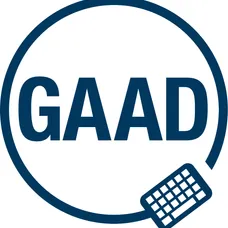Tomorrow is Global Accessibility Awareness Day (GAAD)
Published: 14/05/2025
Author: Jordana Russell
Here’s How You Can Make a Difference in 5 Minutes

Get ready to mark your calendars - tomorrow is Global Accessibility Awareness Day (GAAD)! 🎉 It’s a day dedicated to highlighting digital access and inclusion for the more than one billion people worldwide living with disabilities.
At focusgov, we’re passionate about designing digital experiences that work for everyone. Whether you’re a designer, developer, product owner or just someone who cares, you can take part - even if you’ve only got 5 minutes.
Here’s a quick, hands-on way to check how accessible your website really is.
5-Minute Accessibility Check: Ready, Set, Go!
1. Unplug Your Mouse
Try navigating your website using only the keyboard:
- Use Tab to move through links, buttons, and form fields.
- Use Shift + Tab to go backwards.
- Press Enter to activate buttons or links.
Ask yourself: Can I access everything without a mouse? Can I see where I am on the page?
Why it matters: Many people rely on keyboard navigation, including users with motor disabilities or those using screen readers.
2. Zoom In
Press Ctrl or Cmd and + a few times until you’re zoomed in to 200%.
Ask yourself: Does the layout still make sense? Can I scroll horizontally and vertically? Are things getting cut off?
Why it matters: People with low vision often zoom in. Your content should remain clear and usable.
3. Check for Colour Contrast
Take a quick look: is the text easy to read against the background?
Try this quick tool: WebAIM Contrast Checker
Ask yourself: Is the text high contrast (like dark grey on white, or white on dark blue)? Avoid pale text on light backgrounds.
Why it matters: Poor contrast is a big accessibility barrier for people with visual impairments or colour blindness.
4. Add Alt Text to Images
Pick one page with images. Hover over them or inspect them, here's how:
- Right-click on an image.
- Choose “Inspect” (or “Inspect Element”).
- Look in the HTML for the image tag (<img>) and check for an alt="..." attribute.
Ask yourself: Is the alt text there? Does it describe the image meaningfully (e.g., "Person using a wheelchair at a desk" instead of "Image1")?
Why it matters: Alt text allows screen reader users to understand visual content. It’s also great for SEO!
5. Run an Automated Checker
Use a free tool like WAVE by WebAIM or Chrome’s built-in Lighthouse tool (Right-click > Inspect > Lighthouse)
Ask yourself: What errors pop up? Are there missing labels, contrast issues, or empty links?
Why it matters: Automated tools help you spot quick wins and hidden problems.
You Did It!
Even if accessibility feels like a big topic, starting with these 5 minutes makes a real difference. It’s about building empathy, checking assumptions, and taking real action - one step at a time.
Join us in celebrating Global Accessibility Awareness Day tomorrow by making the web a better place for everyone.
Need help delving deeper? We're always here to chat accessibility, inclusion, and design for all.

